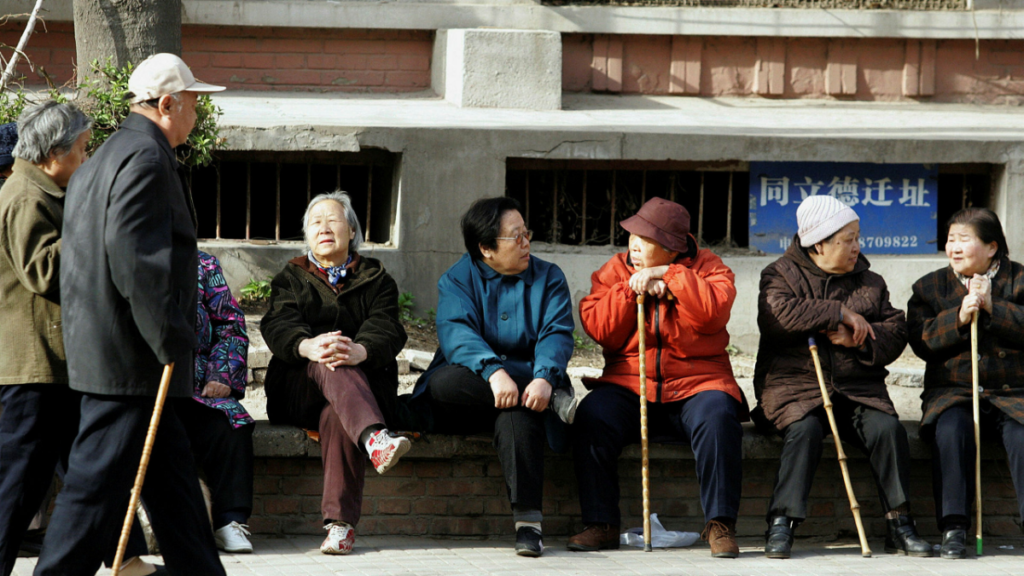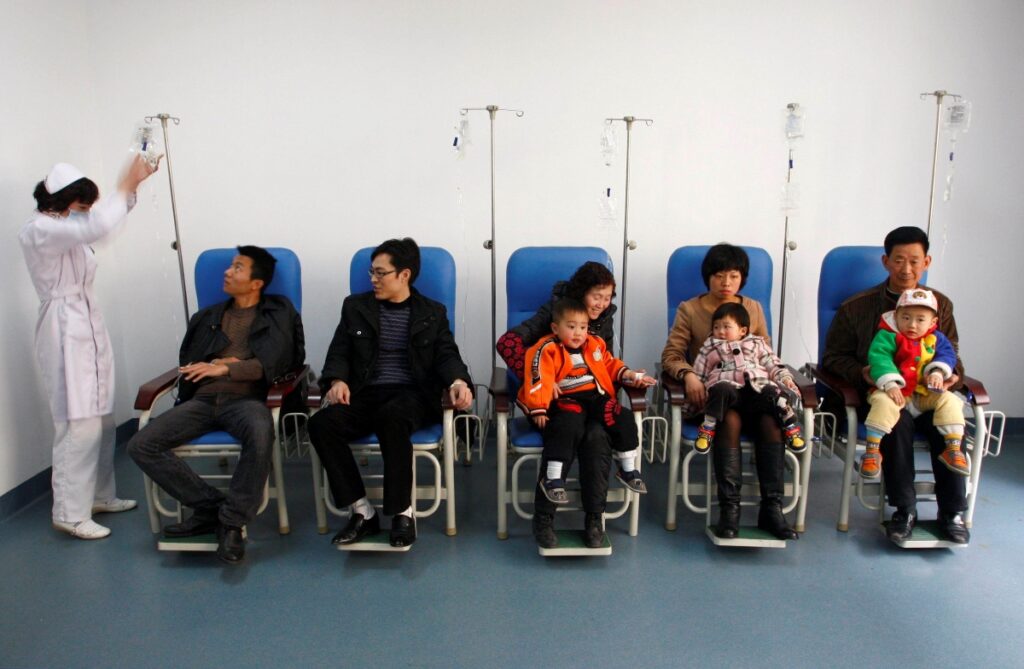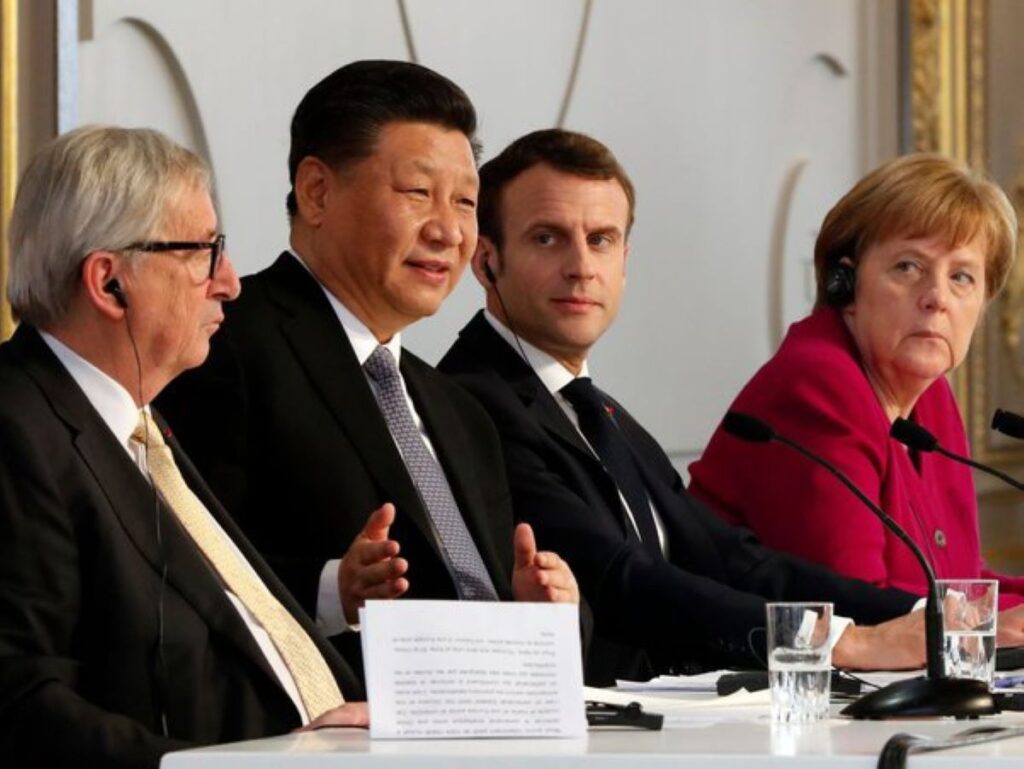
China, the most populous nation globally, is experiencing a profound shift in its demographic landscape, affecting its economy. The recent revelation of a population decline and forecasts predicting further decreases heralds a complex array of challenges stretching across economic, social, and geopolitical spheres.
China Has Experienced Over 11 Million Deaths
Officials said there were more than 11 million deaths, the most since 1974, when China was in the throes of the Cultural Revolution.

A U.S. study found last year that China had almost 2 million excess deaths in early 2023 after officials abruptly lifted three years of “zero-Covid” restrictions, unleashing the coronavirus on a population that had barely been exposed to it.
The Graying Population
One pivotal aspect driving this demographic evolution is the aging populace. Surpassing 20% of the populace aged 60 and above, China confronts a notable surge in elderly citizens.

By 2040, projections indicate that a quarter of the population will surpass the 60-year threshold, portending economic hurdles. The demographic tilt towards the aged segment, marked by diminished economic activity due to retirements, is poised to strain China’s pension and geriatric care apparatus.
Strained Pension System
An imminent consequence is the strain on the pension infrastructure, with forecasts hinting at potential insolvency by 2035. Mitigating this entails policymakers exploring avenues such as upping the retirement age, augmenting tax levies to cover pension commitments, or recalibrating existing benefits.

However, such deliberations are fraught with socio-political ramifications and could catalyze heightened political instability.
ALSO READ: Local Coroners Are Being Forced To Evolve As More Migrants Bite the Dust
Healthcare System Repercussions
Furthermore, the demographic alterations are bound to reverberate through the healthcare realm, potentially triggering service curtailments and public discontent. As older people lean more heavily on their offspring, household spending, savings, and investment could dwindle, causing a harmful sway on overall economic vitality.

Labor Force Dilemma
An additional concern looms over the potential shrinkage of the labor force. As senior workers retire, the pool of working-age individuals diminishes, affecting workforce availability holistically.

Encouraging extended workforce participation among older people is a pivotal stratagem for perpetuating economic expansion and sustaining GDP per capita metrics. Nonetheless, such initiatives could encounter resistance owing to their possible unpopularity.
Productivity Erosion Dynamics
The aging workforce also casts a shadow over productivity accrual, with research positing that labor output ebbs with age. Productivity typically ascends with labor market entry, plateaus between the third and fourth decades, and wanes as retirement beckons.

This demographic shift might precipitate a “doom loop” scenario, wherein diminished productivity catalyzes augmented imports to satiate industrial requisites, imperiling innovation and entrepreneurial ventures.
Innovation and Entrepreneurial Ebb
Also, innovation, a lodestar of economic progression, faces stiflement, courtesy of a contracting and aging workforce that saps the font of fresh ideas. The slackened pace of population growth or its inversion could engender stagnation in intellectual pursuits, impeding technological strides.

This poses a poignant problem for a nation like China, wherein innovation is indispensable for bolstering and refining living standards.
POLL — Is Climate Change a Major Threat That Requires Immediate Policy Action?
Innovation Requires New Ideas
New ideas drive economic growth. The size of the workforce affects innovation because as the number of employed individuals shrinks, the pool of new ideas becomes narrower. If population growth becomes negative or falls to zero, then the knowledge behind those ideas stagnates.

In addition, there is evidence that the peak of a person’s innovative activities and scientific output comes at around 30 and 40 years of age.
Anticipated Economic Deceleration
China’s economic upswing hinges on the combined labor and capital input for generating goods and services. With dwindling populace numbers, perpetuating or elevating per capita productivity assumes primacy for sustaining economic expansion.
Therefore, it is expected that the Chinese economy will experience slower economic growth through, for example, the shrinking of the number of shoppers or consumers, which will directly impact the retail trade sector.

Nonetheless, demographic transformations are liable to incite a descent in productivity indices, precipitating an economic deceleration. In addition, lower demand is likely to intensify the ongoing crisis in the property sector. Fewer people able to buy property will mean a fall in prices.
Anticipated Economic Downturn
The anticipated downturn in economic momentum is poised to cast ripples across diverse sectors. Retail trade, in particular, is primed to bear the brunt, as a contracting consumer base directly impacts demand.

Furthermore, the ongoing property sector imbroglio might intensify, with diminished purchasing power catalyzing price depreciation. This requires a constant or increasing population size. Importantly, with its population decreasing, China would need to increase its per capita productivity to sustain economic growth.
Global Ripple Effects
The repercussions of China’s demographic metamorphosis transcend national confines. As the world’s second-largest market and a cardinal contributor to global economic dynamics, China’s economic vicissitudes will unleash pervasive global ramifications.

In Brazil and South Africa, for instance, both significant trading partners with China, these population shifts may lead to lower export demand. This may result in lower employment levels in those countries as exporting companies are forced to reduce operations.
ALSO READ: California Chinese Restaurant Shuts Down After 44 Years Amid Rising Crime
The Decline Could Benefit Other Economies
As productivity declines in China, its trading partners may be compelled to import products from other economies, which can increase the prices of their products.

In addition, emerging economies such as Thailand and Vietnam that rely on Chinese outbound tourism will experience significant downturns in all tourism-related sectors, such as transport and hospitality, as population shifts lower the number of people able to travel overseas.
Impending Global Quagmire
Multinational enterprises, heavily reliant on the Chinese consumer demographic, might grapple with a steep demand slump, impinging on revenue inflows.

The global repercussions could be catastrophic, with suppliers and labor cohorts grappling with vanishing livelihoods, culminating in a stark economic retrenchment with far-reaching ramifications.
Navigating Demographic Challenges
Addressing China’s demographic quandaries necessitates a multifaceted approach, encompassing pension revamps, healthcare overhauls, and initiatives fostering productivity and innovation.

The global community must brace for the spillover ramifications of China’s economic deceleration, underlining the interconnectedness of the contemporary world. As China charts its demographic trajectory, the choices crafted will sculpt its destiny and reverberate across territorial bounds, shaping the trajectory of global economic expansion.
You Might Also Like:
Chicago Police Officer Sues City for Refusing to Allow Him Change His Race
Group Slams Florida College With Rare Sanction Over Its “Politically Motivated Takeover”
Workers at Unmarked Arizona Building Refuse to Answer Questions About Housing Migrants
Nassau County Bans Transgender Athletes From Women and Girls’ Sports at County-Run Facilities
Tennessee Pastor Takes the Gospel to the Streets, Feeds Families in Food Deserts
